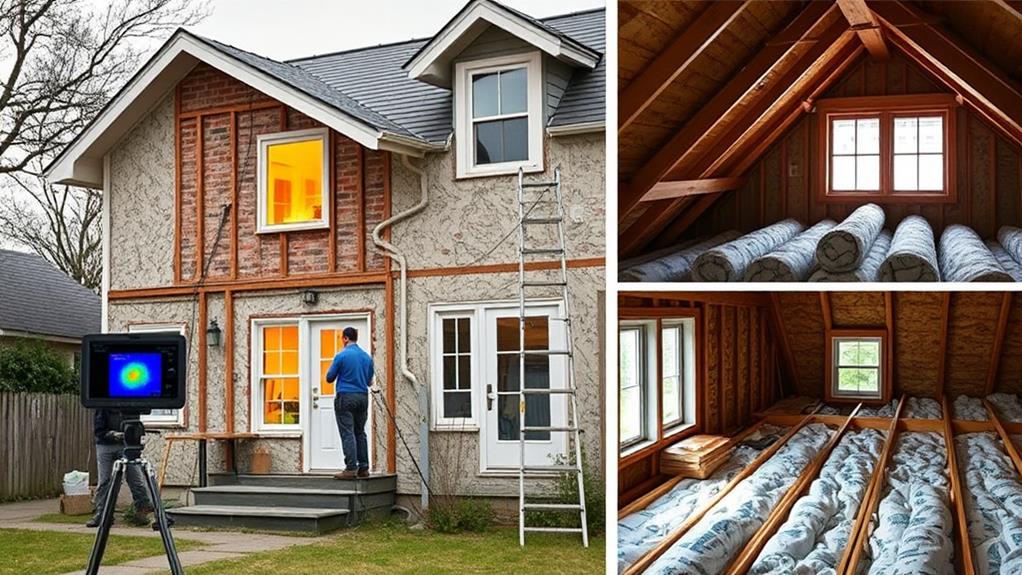Insulating older homes presents unique challenges due to their construction methods and materials. You'll encounter issues like solid masonry walls, lath and plaster interiors, and outdated wiring. Common problems include inadequate insulation, air leaks, and moisture issues. To improve energy efficiency, you'll need to assess your home's specific needs through an energy audit. Solutions may involve blown-in insulation, foam injection, attic upgrades, and basement or crawl space treatments. Don't forget to address windows and doors for a comprehensive approach. While preserving historical features is important, you can still make significant improvements. By understanding the complexities, you'll be better equipped to tackle this rewarding project.
Understanding Older Home Construction
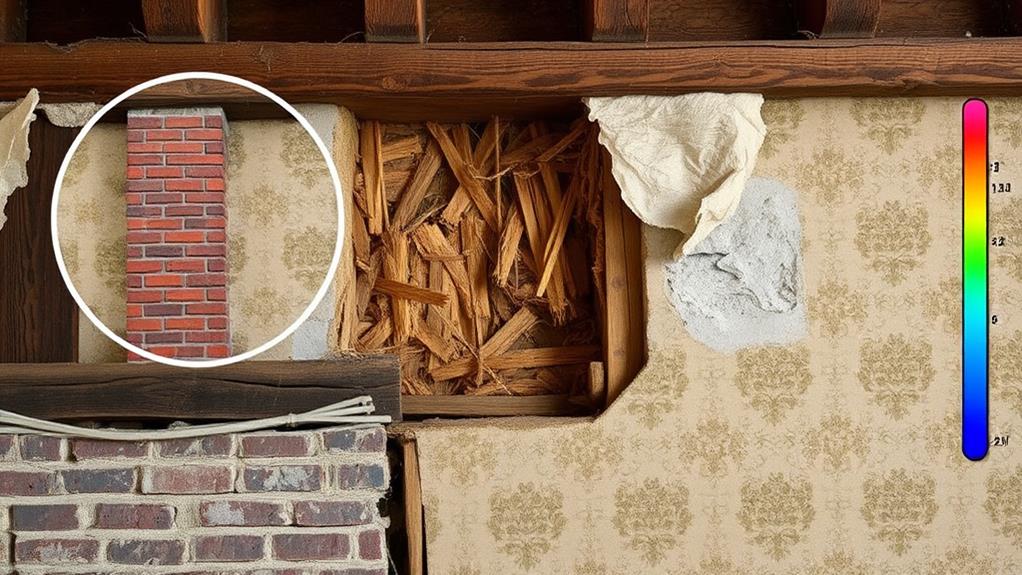
Older homes often present unique insulation challenges due to their construction methods and materials. When you're dealing with a house built before the 1940s, you're likely to encounter solid masonry walls, lath and plaster interiors, and balloon framing. These elements can make adding insulation more complex than in modern homes.
You'll find that many older houses lack a proper vapor barrier, which can lead to moisture issues if not addressed correctly. The presence of knob-and-tube wiring is another factor you'll need to consider, as it can pose safety risks when combined with certain insulation materials.
Older homes typically have uninsulated walls, floors, and attics. You might notice drafts around windows and doors due to worn weatherstripping or lack of proper sealing. Chimneys and fireplaces, common in older structures, can also be significant sources of heat loss.
Understanding these characteristics is crucial before you begin any insulation project. You'll need to assess the condition of existing materials, identify potential hazards like asbestos or lead paint, and consider the home's historical value. This knowledge will help you choose appropriate insulation methods that improve energy efficiency while preserving the home's integrity.
Common Insulation Issues
When it comes to insulating older homes, what're the most frequent problems you'll encounter? First, you'll often find inadequate or nonexistent insulation in walls, attics, and crawl spaces. Many older homes were built before modern insulation standards, leaving large areas exposed to heat loss and gain.
You'll also face challenges with outdated materials like vermiculite or asbestos, which require professional removal. Air leaks are another common issue, particularly around windows, doors, and where utilities enter the home. These gaps allow drafts and moisture infiltration, reducing energy efficiency.
Older homes may have knob-and-tube wiring, which can't be safely covered with insulation. You'll need to address this electrical system before adding new insulation. Moisture problems, such as poor ventilation or leaky roofs, can lead to mold growth and reduce insulation effectiveness.
Lastly, you might encounter structural issues that complicate insulation installation, like uneven surfaces or deteriorating materials. These problems can make it difficult to achieve a continuous insulation barrier, requiring additional repairs or specialized techniques to ensure proper coverage and performance.
Assessing Your Home's Needs
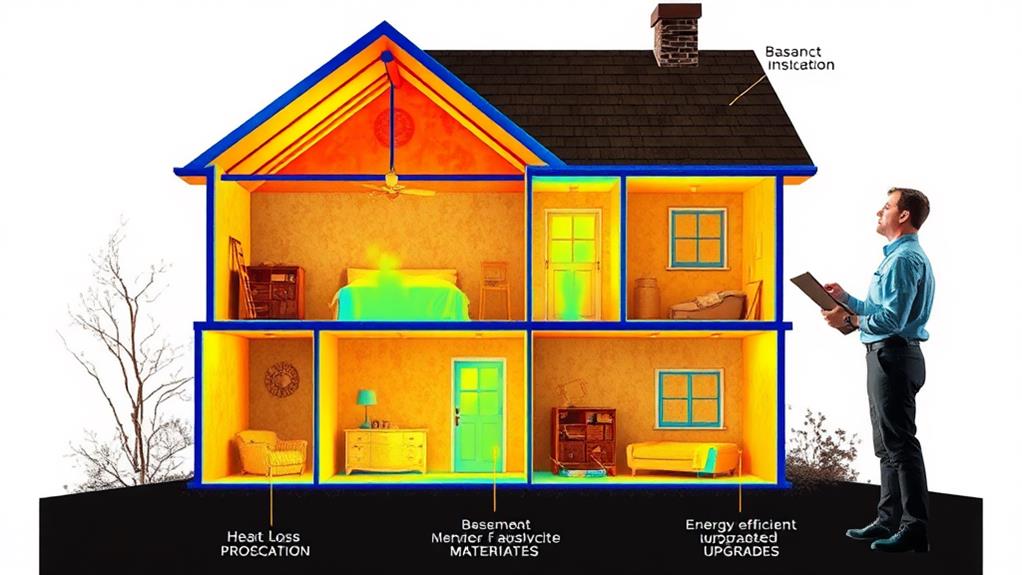
Before diving into insulation upgrades, you'll need to thoroughly assess your home's unique needs. Start by conducting a comprehensive energy audit, which will identify areas of heat loss and air leakage. You can hire a professional or perform a DIY assessment using tools like an infrared thermometer and smoke pencils.
Examine your walls, attic, basement, and crawl spaces for existing insulation. Check its condition, type, and R-value. Look for signs of moisture damage, mold, or pest infestations, which can compromise insulation effectiveness. Inspect your windows and doors for drafts and consider their overall condition.
Evaluate your home's ventilation system, as proper airflow is crucial when adding insulation. Assess your HVAC system's efficiency and age, as it works in tandem with insulation to maintain comfort. Don't forget to examine your home's exterior, noting any cracks or gaps in the foundation or siding.
Wall Insulation Techniques
With your home's needs assessed, it's time to focus on wall insulation techniques. Older homes often lack adequate wall insulation, leading to significant heat loss. You've got several options to improve your walls' thermal performance.
Blown-in insulation is a popular choice for existing walls. It involves drilling small holes in the wall and blowing in cellulose or fiberglass insulation. This method is effective and minimally invasive, ideal for preserving historic interiors.
Foam injection is another option. Contractors inject expanding foam into wall cavities, filling gaps and creating an air barrier. It's excellent for irregular spaces but can be more expensive.
For extensive renovations, you might consider removing interior drywall to install batts or spray foam insulation. This allows for a thorough job but is more disruptive and costly.
External wall insulation involves adding a layer of insulation to the outside of your home. It's highly effective but changes your home's appearance and may require planning permission.
Remember to address potential moisture issues before insulating. Proper vapor barriers are crucial to prevent condensation within walls. Always consult a professional to ensure the chosen technique is suitable for your specific home.
Attic and Roof Insulation
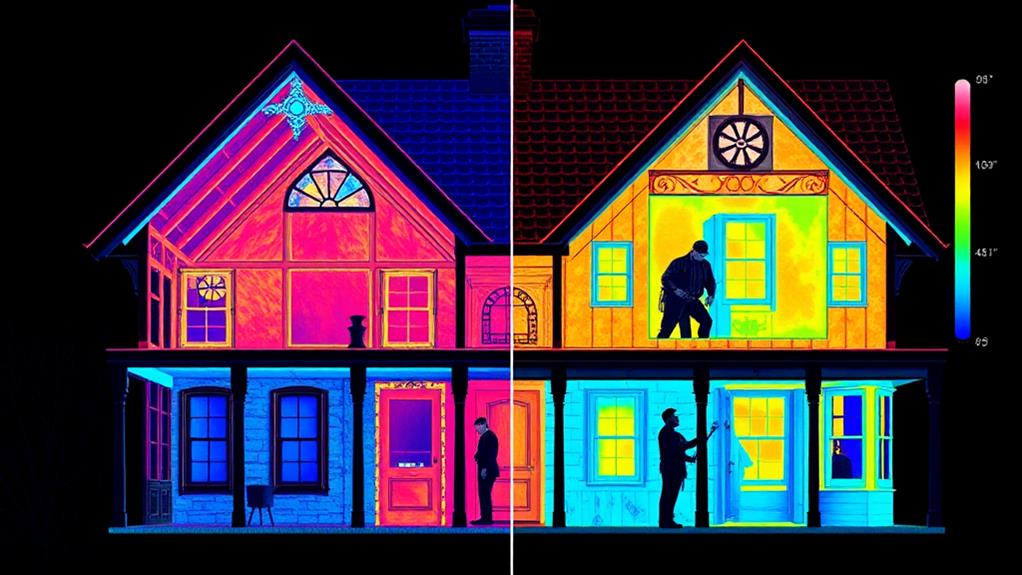
The attic and roof are critical areas for insulation in older homes. You'll want to focus on these spaces because they're responsible for a significant portion of heat loss in winter and heat gain in summer.
Start by inspecting your attic for existing insulation. If it's inadequate or damaged, you'll need to add or replace it.
For attic floors, consider blown-in cellulose or fiberglass insulation. These materials are easy to install and can effectively fill irregular spaces. If you're planning to use your attic as living space, you'll need to insulate the roof rafters instead. Rigid foam boards or spray foam insulation work well for this purpose.
Don't forget about proper ventilation. Install soffit and ridge vents to prevent moisture buildup and maintain airflow. This will help prevent ice dams in winter and keep your attic cooler in summer.
For the roof itself, you can add a radiant barrier beneath the shingles to reflect heat. If you're replacing your roof, consider energy-efficient shingles or a cool roof coating to reduce heat absorption.
Remember to seal any air leaks before adding insulation. This will maximize the effectiveness of your insulation efforts and improve your home's overall energy efficiency.
Basement and Crawl Space Solutions
Moving from the top to the bottom of your home, let's focus on basement and crawl space insulation. These areas are often overlooked but can significantly impact your home's energy efficiency and comfort. In older homes, basements and crawl spaces are typically uninsulated, leading to heat loss and moisture issues.
For basements, start by addressing any water infiltration problems before insulating. Install a vapor barrier on the walls and floor, then add rigid foam insulation to the walls. Don't forget to insulate the rim joists, as they're a common source of heat loss. If you have a finished basement, consider removing drywall to add insulation behind it.
In crawl spaces, begin by ensuring proper ventilation and moisture control. Install a vapor barrier on the ground and seal any gaps or cracks. Insulate the walls with rigid foam boards or spray foam insulation. If your crawl space has a dirt floor, consider encapsulating it with a thick plastic vapor barrier.
For both areas, pay attention to air sealing. Seal gaps around pipes, ducts, and electrical penetrations to prevent air leakage. By insulating your basement and crawl space, you'll improve your home's overall energy efficiency and create a more comfortable living environment.
Window and Door Upgrades
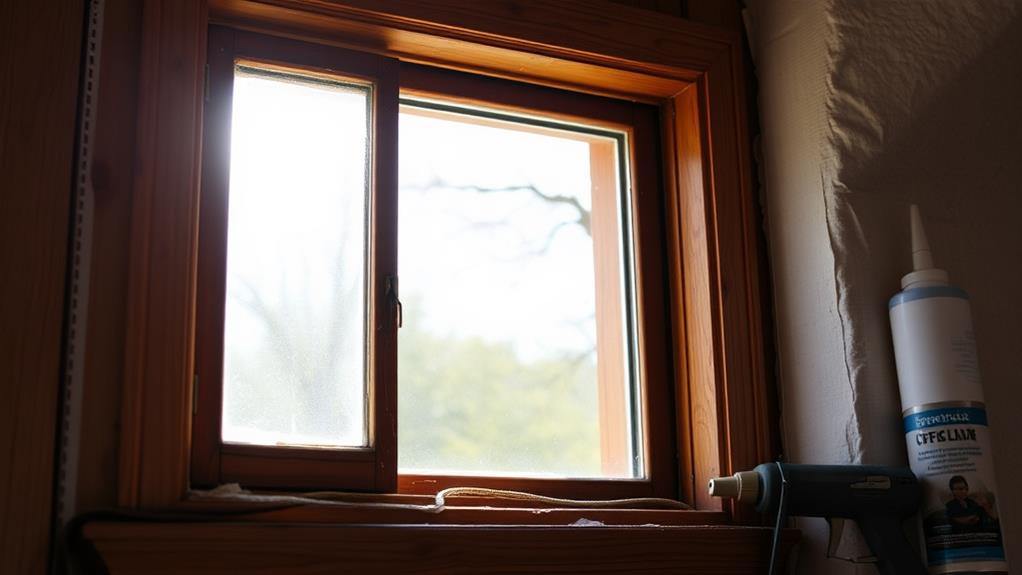
Often overlooked, windows and doors play a crucial role in your home's insulation and energy efficiency. In older homes, these openings can be major sources of heat loss and drafts.
To improve insulation, start by weatherstripping around doors and windows to seal air leaks. You'll find various types of weatherstripping materials, including foam tape, V-strip, and door sweeps, each suited for different applications.
For windows, consider installing storm windows or replacing single-pane windows with double or triple-pane options. These provide better insulation and can significantly reduce heat transfer. If replacement isn't feasible, apply window films or hang insulating curtains to improve thermal performance.
Don't forget about your doors. Older doors, especially those made of wood, can warp and create gaps. Install door sweeps at the bottom and ensure the weatherstripping around the frame is intact. For maximum insulation, consider replacing old doors with energy-efficient models that have built-in insulation and tighter seals.
Remember to inspect and maintain these upgrades regularly. Proper care will ensure they continue to perform effectively, keeping your older home comfortable and energy-efficient for years to come.
Preserving Historical Features
While upgrading insulation is important, preserving historical features in older homes presents a unique challenge. You'll need to balance energy efficiency with maintaining the character and architectural integrity of your home. Start by identifying which elements are historically significant, such as ornate moldings, original windows, or period-specific fixtures.
For walls, consider using minimally invasive techniques like blown-in insulation or foam injection. These methods can improve insulation without damaging plaster or woodwork. When addressing windows, opt for storm windows or interior insulating panels instead of replacing original frames. You can also use weatherstripping and caulking to reduce drafts while preserving the original look.
For floors, install insulation from below if possible, avoiding the need to remove historic floorboards. In attics, add insulation above the ceiling, being careful not to block ventilation or compress existing materials. When insulating around fireplaces or chimneys, use fire-resistant materials and maintain proper clearances.
Cost-Benefit Analysis
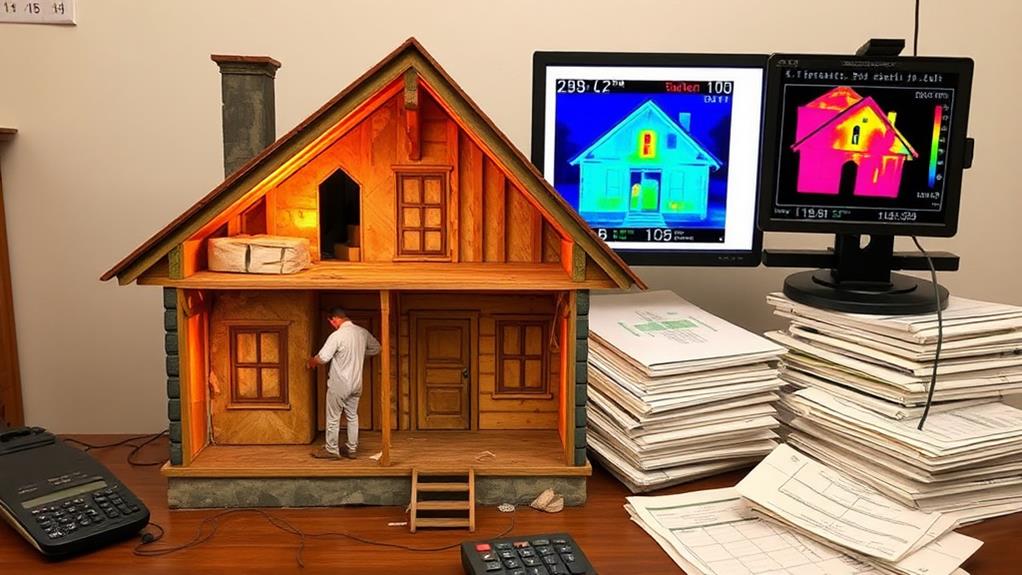
When considering insulation upgrades for older homes, it's crucial to conduct a thorough cost-benefit analysis. You'll need to weigh the initial investment against long-term energy savings and improved comfort. Start by getting a professional energy audit to identify areas of heat loss and potential improvements. This will help you prioritize the most effective upgrades.
Consider the payback period for different insulation options. While some measures, like attic insulation, often have quick returns, others may take longer to recoup costs. Factor in local energy prices and climate conditions, as these influence potential savings. Don't forget to research available tax incentives or rebates for energy-efficient upgrades, which can offset initial expenses.
Remember that insulation benefits extend beyond energy savings. You'll likely experience increased comfort, reduced drafts, and better temperature control. These factors can enhance your home's livability and potentially increase its market value. Additionally, consider the environmental impact of reduced energy consumption. By lowering your carbon footprint, you're making a sustainable choice that benefits both your wallet and the planet.
Conclusion
You've embarked on a journey through the nooks and crannies of your beloved older home. Like a skilled detective, you've uncovered its secrets and weak spots. Now, armed with knowledge and solutions, you're ready to wrap your house in a cozy blanket of insulation. Remember, this isn't just about comfort—it's an investment in your home's future. So roll up your sleeves and breathe new life into those old walls. Your warm, efficient haven awaits!
